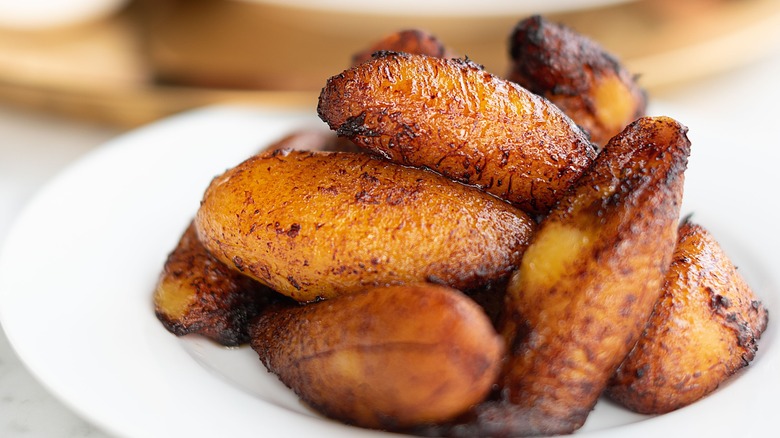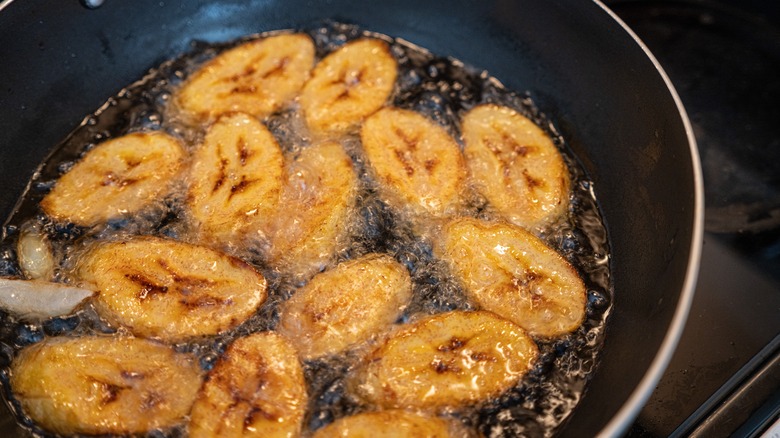How To Make The Absolute Best Tajadas, According To A Chef
Whether you're in the Caribbean, South America, or even Africa, fried plantains are an everyday staple. In Latin America, they go by many names and take on many forms, from these smashed and fried green plantain tostones with garlic sauce to long thin plantain chips known as platanos fritos. Tajadas, also known as maduros, are fried sweet plantains that are popular side dishes from Cuba to Colombia. We've consulted Colombian-born and Cuban-influenced celebrity chef Ronaldo Linares on how to make the absolute best tajadas at home.
The best tajadas start with choosing the best ingredients and preparing them correctly. Since tajadas are sweet, they require ripe plantains, which Linares characterizes as "yellow with black spots." Green plantains are unripe and have a much harder texture and savory flavor when fried. ANd when it comes to preparation, tajadas require a specific slicing methodology. "Cut both ends of the plantains off, from top to bottom peel the plantain, lay the plantain flat, using a knife slice at a bias, half inch thickness will do the trick," Linares said.
Slicing the plantain at a bias refers to the knife entering the pulp at a diagonal to create more oblong half-inch coins. Linares also stresses the importance of uniformity when preparing tajadas because "cut[ing] the plantains into even slices ... ensure[s] that they cook evenly and have a consistent texture."
Frying, seasoning and serving tips
As fried foods, tajadas require many of the same tips that deep frying involves. For example, deep frying necessitates precise oil temperatures to achieve that desired textural contrast of crispy exterior and tender interior. "I like to fry my plantains at 350 degrees, turning them over to achieve an even golden color on both sides," Ronaldo Linares advised.
Because you're flipping them, ensure that there's some space between each plantain slice. An overcrowded frying pan is a common frying mistake that'll sabotage the consistent, even texture Linares described above.
Another key tip for texture and flavor is to prepare a plate lined with paper towels to place your tajadas, in order to remove excess grease. Grease retention leads to soggy textures and overly dense consistency that'll sit heavy on our stomachs. Lastly, Linares finishes freshly fried plantains with a sprinkling of salt to "bring[s] out that natural sweetness from the tajadas."
Salt is a quintessential seasoning to highlight the dominant taste in most dishes, whether they're savory or sweet. Tajadas are an example of the latter, but they're served alongside savory meals. Most meals in the Caribbean and Central and South America serve tajadas, rice, and beans as the standard accompaniments to main course proteins. Even if you are enjoying them as an appetizer, common dipping sauces and accompaniments tend to veer toward the savory. In Colombia, tajadas might come with salsa rosada, which is a spicier, lime-infused version of a classic Russian dressing recipe.

